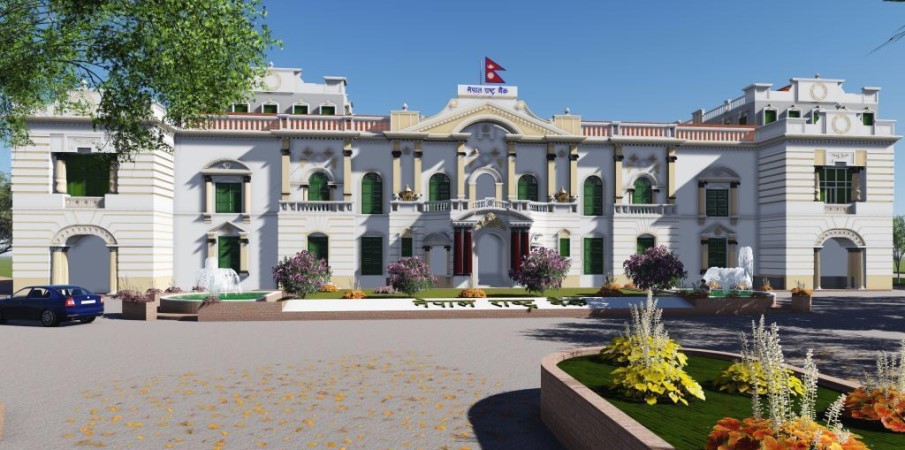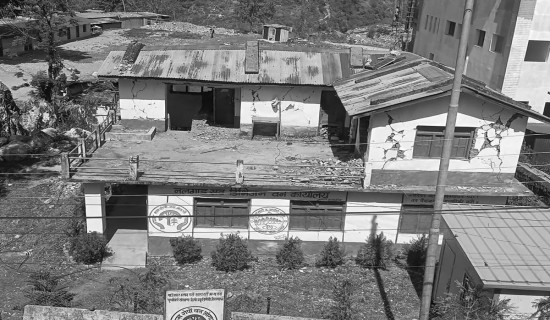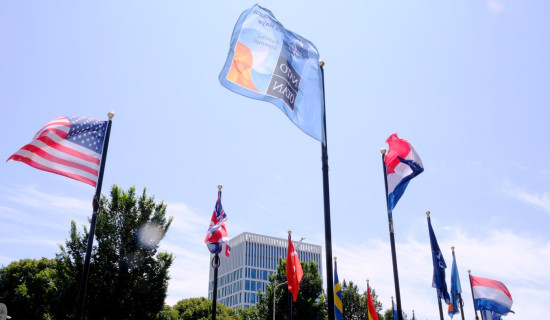- Wednesday, 25 June 2025
NRB reviews mid-term monetary policy, adopts flexible measures for borrowers
By Laxman Kafle,Kathmandu, Feb. 11: Nepal Rastra Bank (NRB) has reviewed its mid-term monetary policy of the fiscal year 2022/23 by adopting flexible measures for borrowers.
The central bank reviewed the monetary policy on Friday, and has proposed that the borrowers will not be charged penal interest if s/he pays within one month of exceeding the principle /interest obligation until the end of mid-June 2023.
This arrangement will provide relief to the debtors.
In order to facilitate the operation of small and medium-scale industries, the NRB has also made arrangements to restructure and reschedule the loans of up to Rs. 20 million in the active category by mid-January 2023 by analysing the cash flow and income of such industries andbusinesses until mid-July 2023.
In order to further strengthen the quality of loans of banks and financial institutions (BFIs), as soon as the loans classified as non-performing under the loan classification and loss system are regularised, they will be classified into good and micro-monitored categories based on international best practices, said the NRB.
The monitoring of the arrangements related to the average interest rate difference between loans and deposits and the premium charged from the borrowers to be maintained by BFIs is going to be made more effective.
Interest rate on overnight liquidity facility reduced
Similarly, the NRB has also reduced the interest rate charged by the banks.
The NRB has made an arrangement to make the overnight liquidity facility available at a policy rate of 7 per cent under the daily liquidity facility that the NRB is providing to BFIs at a bank rate of 8.5 per cent. This will also make it easier for the BFIs.
The rates under the interest rate corridor have been kept unchanged. The mandatory cash reserve ratio (CRR), statutory liquidity ratio (SLR) and standing liquidity facility (SLF) have been kept intact.
The mandatory cash reserve ratio is at 4 per cent and the bank rate at 8.5 per cent.
Industrialists had expected that the NRB would reduce the sky-rocketing interest rate through its half-yearly monetary policy.
The NRB said that liquidity would be managed in such a way that the interest rate corridor would be effective and there would be no disruption in the payment system.
Inflation exceeds target limit
Due to careful and tight policy direction, the situation of balance of payment has gradually improved and it has started to remain in surplus since October 2022.
The rate of increase in consumer prices has also started decreasing. However, in the context of the complete removal of the restrictions on the import of certain items and the cash margin system that must be kept when opening letters of credit, there is a possibility that imports may increase again and put pressure on the external sector, as well as the average inflation is still above the target, the direction adopted in the current monetary policy has been kept unchanged, said the NRB.
Although the government has set a target of keeping the inflation within the desired limit of 7 per cent for the current financial year, it has reached 7.26 per cent by the half-yearly review period.
According to the half-yearly review of the monetary policy unveiled today, the annual point inflation was 7.26 per cent in mid-January 2023. During the same period last year, the inflation was equal to 5.65 per cent.
Due to the increase in the price of petroleum products and the devaluation of the Nepali currency, the price of imported goods has increased and pressure has been put on consumer prices.
According to the NRB, it will take some time for the pressure on prices to decrease in view of the external and internal economic scenario.
In order to control inflation, most of the world’s central banks have continued the tight monetary policy they have adopted since the beginning of 2022.
Liquidity Improves
While reviewing monetary policy for the first six months of the current fiscal year, the NRB said that there has been a general improvement in the liquidity position of the financial system in the six months of the current financial year compared to the same period last fiscal year.
By the second quarter of the fiscal year 2022/23, liquidity of Rs. 401.94 billion has been mobilised through open market transactions.
Similarly, during the review period, BFIs have repeatedly used the amount of Rs. 2,692.83 billion from the NRB through a standing liquidity facility.
Overnight liquidity facility has been in use since mid-December 2022. In the month of Poush, daily liquidity facilities worth Rs. 35.48 billion and overnight liquidity facilities worth Rs.12.81 billion have been utilised from the banks and financial institutions.



-original-thumb.jpg)












